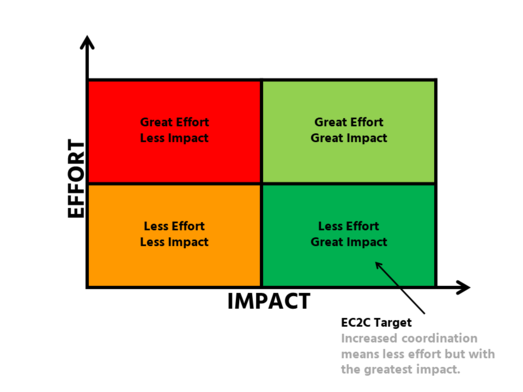Measuring Matters
For EC2C efforts to make an impact, partner organizations and action teams establish shared goals and hold each other accountable to creating necessary change to achieve them. Data informs both.
Establishing Shared Goals
A shared vision of the change we aim to realize in Evanston creates the cornerstone of our collective impact work. To identify this in measurable terms, we use Result-Based Accountability techniques to identify the "curve" we hope to "turn" as an indication of progress toward creating more equitable systems for all of Evanston's children and families.
In RBA, "the curve" is a quantifiable, long-term measure we use to indicate a condition we agree needs to change. Once agreed upon, the work of EC2C becomes strategic, identifying particular system-level strategies we coordinate and enact to create the conditions we hope to see, thus "turning the curve" for our students and families.
As a cradle-to-career initiative, our initial work coalesced around the beginning of the continuum, in early childhood.
Evaluating collective work: Who Benefits? How much?
Collective impact work challenges us as partner organizations and team members to "change the way we do business," including the way we assess our own impact and make necessary changes to our course of action.

Through our RBA process, EC2C partners and action teams establish performance measures for each strategy enacted so that we can work to continually improve, adjust, or course-correct to find the best, most efficient way to create the most impact on "turning our curve."
This tool and our commitment to created shared impact shows our collective commitment to a cycle of continuous improvement. On a quarterly basis, our action teams, partners, and operations team collaborate to review and evaluate our strategies, make course corrections, and build on our current, growing framework of impact strategies.

